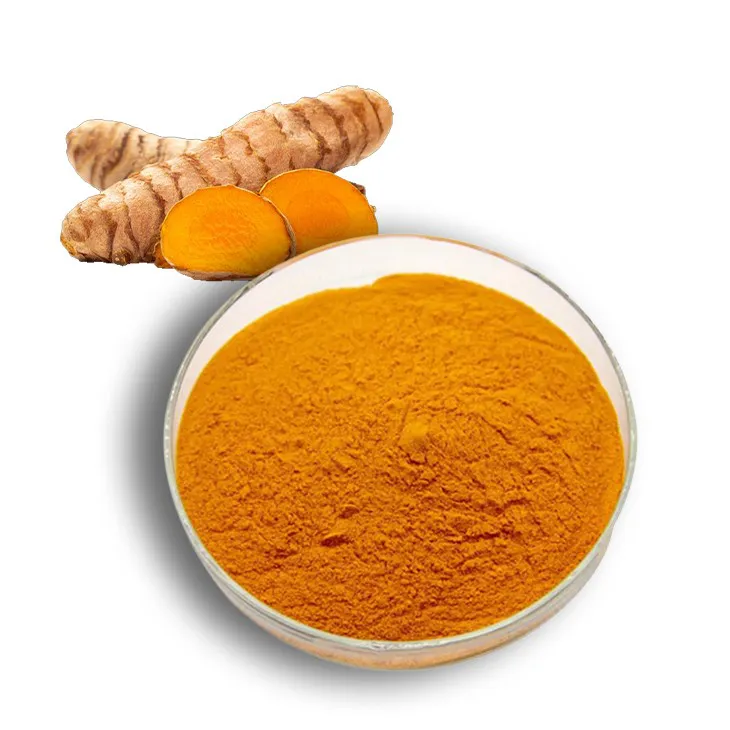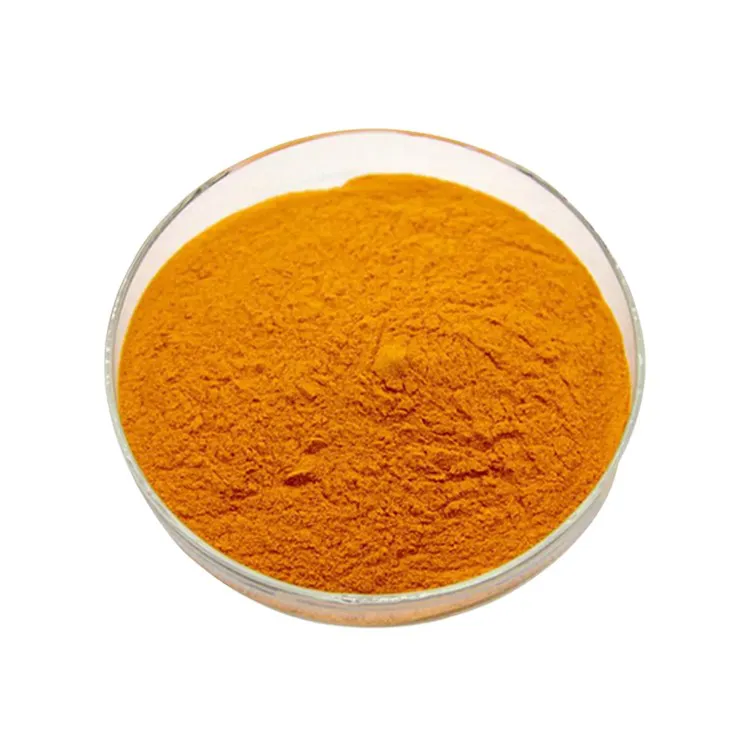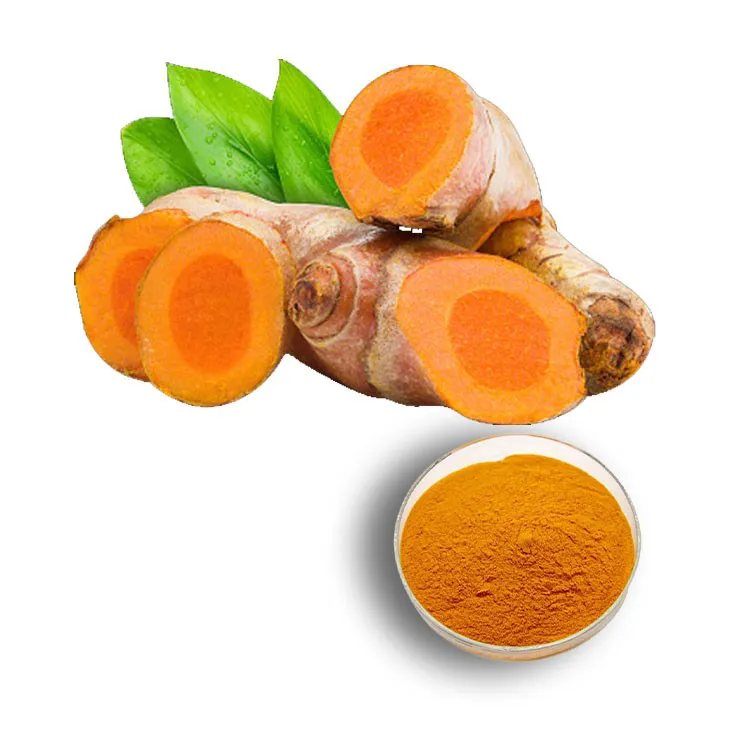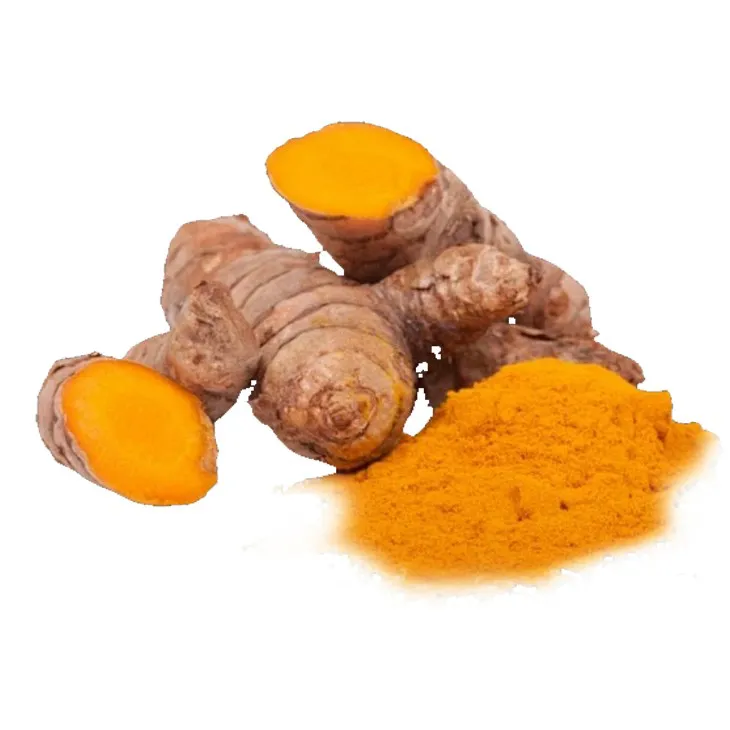- 0086-571-85302990
- sales@greenskybio.com
The process of extracting curcumin crystals from curcumin.
2024-11-27

1. Introduction
Curcumin, a bioactive compound, has attracted significant attention in recent years due to its numerous health - promoting properties such as antioxidant, anti - inflammatory, and anti - cancer activities. It is mainly found in turmeric (Curcuma longa), a plant native to South Asia. The extraction of Curcumin crystals from Curcumin - rich sources is an important process as these crystals can be used in various applications including pharmaceuticals, food additives, and cosmetics. This article will explore in detail the process of extracting curcumin crystals from curcumin.

2. Source of curcumin
Turmeric roots are the primary source of curcumin. These roots are rich in curcuminoids, of which curcumin is the most important. Turmeric is widely cultivated in tropical and subtropical regions around the world. Other sources of curcumin include some other species of the Curcuma genus, but turmeric remains the most common and economically viable source.

3. Pretreatment of the source material
3.1 Cleaning
The first step in the extraction process is to clean the turmeric roots thoroughly. This helps to remove any dirt, debris, or other contaminants that may be present on the surface of the roots. Cleaning can be done using water, and sometimes mild detergents may be used, followed by thorough rinsing to ensure that no detergent residue remains.
3.2 Drying
After cleaning, the turmeric roots need to be dried. Drying can be carried out in several ways, such as air - drying in a well - ventilated area or using drying equipment like dehydrators. The purpose of drying is to reduce the moisture content of the roots. A lower moisture content is beneficial for the subsequent extraction steps as it helps in better interaction with solvents and prevents the growth of microorganisms during the extraction process. The dried turmeric roots should be stored in a cool, dry place until further processing.
3.3 Grinding
Once the roots are dried, they are ground into a fine powder. Grinding is an important step as it significantly increases the surface area of the turmeric material. A larger surface area allows for better contact and interaction with the solvents used in the extraction process. Grinding can be done using a variety of equipment, such as mortar and pestle for small - scale extraction or industrial - grade grinders for large - scale production. The resulting powder should be of a consistent fine texture to ensure uniform extraction.

4. Extraction of curcumin using solvents
4.1 Selection of solvents
Organic solvents are typically used to extract curcumin from the ground turmeric powder. Commonly used solvents include ethanol, acetone, and ethyl acetate. The choice of solvent depends on several factors such as the solubility of curcumin in the solvent, the cost of the solvent, its toxicity, and its ease of recovery. For example, ethanol is a relatively safe and cost - effective solvent that has a good solubility for curcumin, making it a popular choice in many extraction processes.
4.2 Extraction process
The ground turmeric powder is mixed with the selected solvent in a suitable container. The ratio of powder to solvent can vary depending on the extraction conditions, but typically a certain amount of powder is added to an excess of solvent to ensure complete extraction. This mixture is then stirred or agitated for a period of time, which can range from a few hours to several days depending on the scale of extraction and the efficiency of the mixing equipment. During this time, curcumin dissolves in the solvent, separating from the other components of the turmeric powder.

5. Filtration
After the extraction step, the mixture is filtered to separate the liquid extract (containing dissolved curcumin) from the solid residue. Filtration can be done using various methods such as filter paper in a simple funnel for small - scale extractions or using industrial - scale filtration equipment like filter presses. The solid residue contains the insoluble components of the turmeric powder and is discarded. The filtrate, which contains the dissolved curcumin, is then collected for further processing.

6. Evaporation
6.1 Purpose of evaporation
The next step is to remove the solvent from the filtrate. This is done through evaporation. The purpose of evaporation is to concentrate the curcumin solution and ultimately obtain a crude Curcumin Extract. By removing the solvent, the proportion of curcumin in the remaining substance increases.
6.2 Evaporation methods
Evaporation can be carried out using different techniques. One common method is simple evaporation at room temperature or under mild heat in a well - ventilated area. However, this method can be time - consuming. For faster evaporation, rotary evaporators are often used in laboratories and industrial settings. These devices use a combination of reduced pressure and gentle heating to rapidly evaporate the solvent, leaving behind a more concentrated Curcumin Extract.
7. Crystallization
7.1 Principle of crystallization
Crystallization is based on the principle that curcumin has a lower solubility in certain solvents at lower temperatures. By carefully controlling the temperature and concentration of the curcumin solution, curcumin crystals can be made to form. As the solubility of curcumin decreases, it begins to come out of the solution in the form of crystals.
7.2 Crystallization process
The concentrated Curcumin Extract obtained after evaporation is dissolved in a suitable solvent again, but this time in a relatively small amount. The solution is then heated gently to ensure complete dissolution of curcumin. After that, the solution is allowed to cool slowly. As it cools, curcumin crystals start to form. The crystals can be separated from the remaining liquid (the mother liquor) by filtration or centrifugation. However, to obtain pure curcumin crystals, this crystallization process may need to be repeated several times. Each repetition helps to remove impurities that may be present in the crystals.
8. Purification of curcumin crystals
Even after multiple crystallization steps, the curcumin crystals may still contain some impurities. To further purify the crystals, additional techniques can be used. One such technique is chromatography, which can separate curcumin from other closely related compounds based on their different affinities for a stationary phase and a mobile phase. Another method is recrystallization in different solvents or solvent mixtures, which can further refine the purity of the curcumin crystals.
9. Applications of curcumin crystals
9.1 Pharmaceutical applications
Curcumin crystals have significant potential in the pharmaceutical industry. Due to their antioxidant and anti - inflammatory properties, they can be used in the treatment of various diseases such as arthritis, inflammatory bowel disease, and certain types of cancer. They can also be formulated into dietary supplements to promote general health and well - being.
9.2 Food applications
In the food industry, curcumin crystals are used as a natural food coloring agent, giving a yellow - orange color to food products. They are also added to some foods for their antioxidant properties, which can help in extending the shelf - life of the products. For example, curcumin can be added to oils to prevent rancidity.
9.3 Cosmetic applications
Curcumin crystals are finding increasing use in the cosmetic industry. Their antioxidant and anti - inflammatory properties make them suitable for use in skin - care products. They can be used in creams, lotions, and serums to help reduce inflammation, improve skin tone, and protect the skin from oxidative damage caused by environmental factors such as UV radiation.
10. Conclusion
The extraction of curcumin crystals from curcumin is a multi - step process that involves careful handling of the source material, selection of appropriate solvents, and precise control of various extraction, filtration, evaporation, and crystallization steps. The resulting curcumin crystals have a wide range of applications in pharmaceuticals, food, and cosmetics due to their valuable properties. As research on curcumin continues to expand, more efficient and sustainable extraction methods may be developed in the future, further enhancing the availability and usability of curcumin crystals.
FAQ:
What are the common organic solvents used in curcumin extraction?
Commonly used organic solvents in curcumin extraction include ethanol, acetone, and ethyl acetate. These solvents are effective in dissolving curcumin from the source material due to their polarity and solubility characteristics.
Why is grinding the source material important in the extraction of curcumin crystals?
Grinding the source material, such as turmeric roots, is crucial because it significantly increases the surface area. A larger surface area allows for more extensive contact between the curcumin - containing material and the solvent. This enhanced interaction promotes better dissolution of curcumin into the solvent, which is an essential step in the extraction process.
How does the filtration step contribute to the extraction of curcumin crystals?
The filtration step is important in the curcumin extraction process as it helps to separate the dissolved curcumin - solvent mixture from the undissolved solid residues. This ensures that only the relevant components (curcumin and solvent) proceed to the next steps, such as evaporation, and helps in obtaining a purer final product.
What role does evaporation play in the extraction of curcumin crystals?
Evaporation is a key step in the extraction of curcumin crystals. After the curcumin has been dissolved in the solvent, evaporation is carried out to remove the solvent. This leaves behind the curcumin, which can then be further processed to obtain the crystals. It helps in concentrating the curcumin and preparing it for subsequent crystallization steps.
Why are repeated crystallization processes sometimes required to obtain pure curcumin crystals?
Repeated crystallization processes are sometimes necessary to obtain pure curcumin crystals because the initial crystallization may not completely separate all impurities. Each crystallization step helps to further purify the curcumin by selectively precipitating it out of the solution while leaving behind more of the impurities. This iterative process leads to a higher - purity curcumin crystal product.
Related literature
- Efficient Extraction of Curcumin from Turmeric: A Review of Methods"
- "Optimization of Curcumin Crystal Extraction: Key Factors and Techniques"
- "The Science behind Curcumin Crystal Extraction: A Comprehensive Study"
- ▶ Hesperidin
- ▶ Citrus Bioflavonoids
- ▶ Plant Extract
- ▶ lycopene
- ▶ Diosmin
- ▶ Grape seed extract
- ▶ Sea buckthorn Juice Powder
- ▶ Fruit Juice Powder
- ▶ Hops Extract
- ▶ Artichoke Extract
- ▶ Mushroom extract
- ▶ Astaxanthin
- ▶ Green Tea Extract
- ▶ Curcumin
- ▶ Horse Chestnut Extract
- ▶ Other Product
- ▶ Boswellia Serrata Extract
- ▶ Resveratrol
- ▶ Marigold Extract
- ▶ Grape Leaf Extract
- ▶ New Product
- ▶ Aminolevulinic acid
- ▶ Cranberry Extract
- ▶ Red Yeast Rice
- ▶ Red Wine Extract
-
Horse Chestnut Extract
2024-11-27
-
Purple Sweet Potato Extract
2024-11-27
-
Buckthorn bark extract
2024-11-27
-
Stevia Extract
2024-11-27
-
Europen Bilberry Extract
2024-11-27
-
Berberis aristata Extract
2024-11-27
-
Hericium erinaceus extract powder
2024-11-27
-
Black Garlic Extract
2024-11-27
-
Avocado Extract Powder
2024-11-27
-
White mustard seed extract
2024-11-27





















